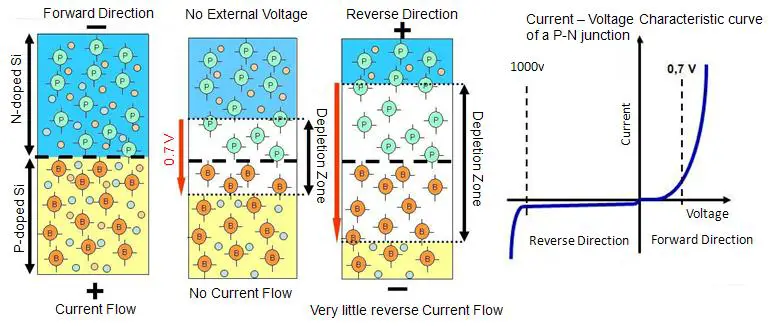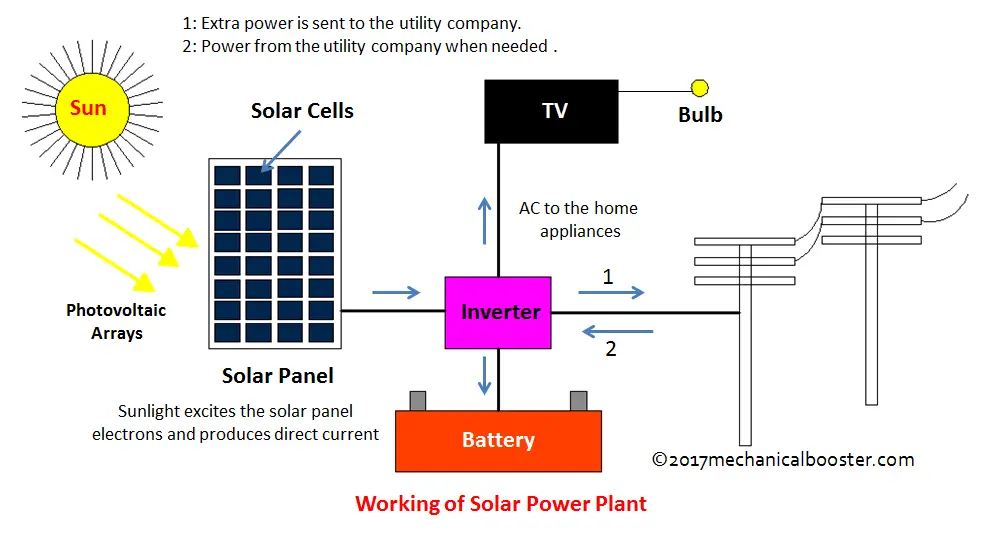Introduction
Knowing the fact that fossil fuels are not going to last forever, solar power generation seems to be leading the path in clean and renewable energy generation among all other renewable sources of energy production. Almost every home has started relying on batteries for power backup. China which once seems world’s largest polluter has now developed the largest solar power plant. Furthermore, by 2020 India is aiming to produce 100,000 MW of electricity from solar power plant only.
Tesla has taken the initiative to power up the Kauai island of Hawaii through solar power plant only. Tesla is providing its industrial battery packs, to store the energy of sun to be used at night. They are ensuring that they can light up the entire island without sunshine for as long as 3 days. And gets recharged back in just 7 hours of sunlight, isn’t that amazing!
Efficient production of power from sunlight is the leading topic of research all around the globe. Let’s just figure out what it takes to convert sunlight into electricity.
How does a Solar Panel Converts Sunlight into Electricity?

Silicon is a much known semiconductor having properties of both metals and non-metals. To make a solar panel, this silicon is doped by a pentavalent impurity converting silicon into positive type silicon also known as p-type silicon. And similarly other part is converted into negative or n-type silicon. As name suggest p-type have excess of holes (positive charge) in it and n- type has excessive electrons. Then these two are combined together one over other upto the atomic level. Due to their contact and having opposite charge electrons flow from n-type to p-type and holes travel from p-type to n-type thus creating a thin potential barrier between them. The current so generated from this movement of charges is named as diffusion current. But we need to understand yet another thing that is due to this potential barrier, giving rise to electric field which flows from the positive charge near n-type and negative charge near p-type junction (the area where potential is generated or meeting area of p and n type). Due to this electric field electrons from p-type starts flowing towards n-type and holes from n-type towards p-type giving rise to a current called drift current. Initially the diffusion current is more than the drift current but as potential difference increases due to diffusion it simultaneously increases the drift current. Current stops flowing when drift current becomes equal to diffusion current.
Sunlight travels to earth in the form of small energy particles called photons. This photon strike the p- type region and transfer its energy to hole and electron pair thus exciting the electron and it gets away from hole. The electric field we have due to potential difference at p-n junction makes its electron to travel to n-type region thus causing the current to flow.
But there a bit more to know, to make this electric field strong enough so that it must travel to n-type region and not recombine with the hole it has been separated from. To make this electric field strong the n-type and p-type regions are connected to negative and positive terminals of battery, this process is known as reverse bias condition. Doing this increases the probability of electron travelling all along the way to n-type region once separated from a hole. Thus increasing the efficiency of a solar panel.
Also Read:
- How Coal Power Plant Works? – Do You Know?
- How Hydropower Plant Works? – Complete Explanation
- Nuclear Power Plant – Working Principle, Advantages, Disadvantages with Diagram
Working Principle
The working principle is that we use the energy of photons to get the drift current flowing in the circuit using reversed bias p-n junction diode (p-type and n-type silicon combination).
Main Components

1. Solar Panels
It is the heart of the solar power plant. Solar panels consists a number of solar cells. We have got around 35 solar cells in one panel. The energy produced by each solar cell is very small, but combining the energy of 35 of them we have got enough energy to charge a 12 volt battery.
2. Solar Cells
It is the energy generating unit, made up of p-type and n-type silicon semiconductor. It’s the heart of solar power plant.
3. Battery
Batteries are used to produce the power back or store the excess energy produced during day, to be supplied during night.
4. D.C. to A.C. Converter (Inverter)
Solar panels produce direct current which is required to be converted into alternating current to be supplied to homes or power grid.
Working of Solar Power Plant
As sunlight falls over a solar cells, a large number of photons strike the p-type region of silicon. Electron and hole pair will get separated after absorbing the energy of photon. The electron travels from p-type region to n-type region due to the action of electric field at p-n junction. Further the diode is reversed biased to increase this electric field. So this current starts flowing in the circuit for individual solar cell. We combine the current of all the solar cells of a solar panel, to get a significant output.

Solar power plant have a large number of solar panels connected to each other to get a large voltage output. The electrical energy coming from the combined effort of solar panels is stored in the Lithium ion batteries to be supplied at night time, when there is no sunlight.
Energy Storage
Storage of the energy generated by the solar panels is a important issue. Sometimes the unused energy generated during daytime is used to pump water to some height, so that it could be used to generate electricity using its potential energy when required or mainly at night time.
For current being Tesla is providing its industrial energy pack to store energy and currently it is lighting up an entire island. Tesla has also made an offer to Australia that it could provide its battery pack for emergency blackouts.
The cost of manufacturing of solar panels has decreased rapidly in last few years, same is said to be true with the industrial energy pack (Lithium ion batteries), as the production and demand increases their cost is going to decrease in coming few years.
Also Read:
- How Wind Power Plant Works?- Complete Explanation
- How Geothermal Power Plant Works – Explained?
- Steam Power Plant Construction,Working, Advantages and Disadvantages with Diagram
What About Solar Panel Pollution?
The pollution produced during the production of solar panels varies from nothing to a considerable range depending upon who is manufacturing it in the first place. In production of electric panels the chemicals used are sodium hydroxide, hydrofluoric acid and carbon tetra oxide. These chemicals are mainly used in up-steam in supply chain, where the raw material is treated. Its ia real danger to the workers producing the panels but if preventive measures and proper equipments are being used then the production of panels is said to be safe.
But then we have china as the leading manufacturer of solar panels, it is hard to say if they are using the right workplace and proper work environment, as one of the solar panel manufacturer in china is caught dumping solar waste into the nearby river.
Advantages of Solar Energy
- Most clean and renewable source of energy.
- It is available in abundance and endless.
- It provides electricity at low cost, as fuel is free.
- With new research in this sector we now have a good power storage solution.
- Keeping in mind the pollution and cost of fossil fuel, it’s becoming the most reliable source of clean energy.
Disadvantages of Solar Power Plant
- It requires a lot of land to be captured forever.
- Initial cost of installation is too high.
- The energy storage options are not efficient and moreover costly if efficient.
- Power production is quite low as compared to nuclear or other resources to produce power.
- There is a problem if it is cloudy for few days.
- Their production causes pollution.
Applications
- Solar power plant is powering cities in most efficient manner.
- Solar panels could be used to generate electricity individually for each house especially in remote areas.

Hey I am so thrilled I found your weblog, I really found you by accident, while I was browsing on Askjeeve for something else, Regardless I am here now and would just like to say cheers for a fantastic post and a all round thrilling blog (I also love the theme/design), I don’t have time to go through it all at the moment but I have saved it and also included your RSS feeds, so when I have time I will be back to read much more, Please do keep up the great job.|